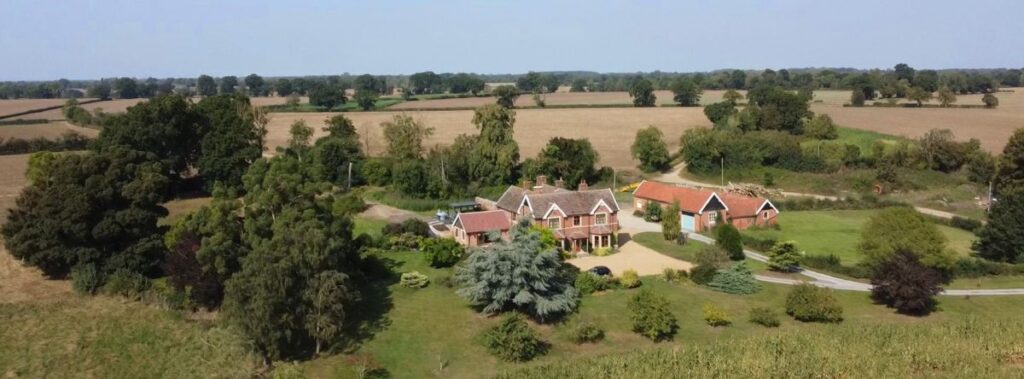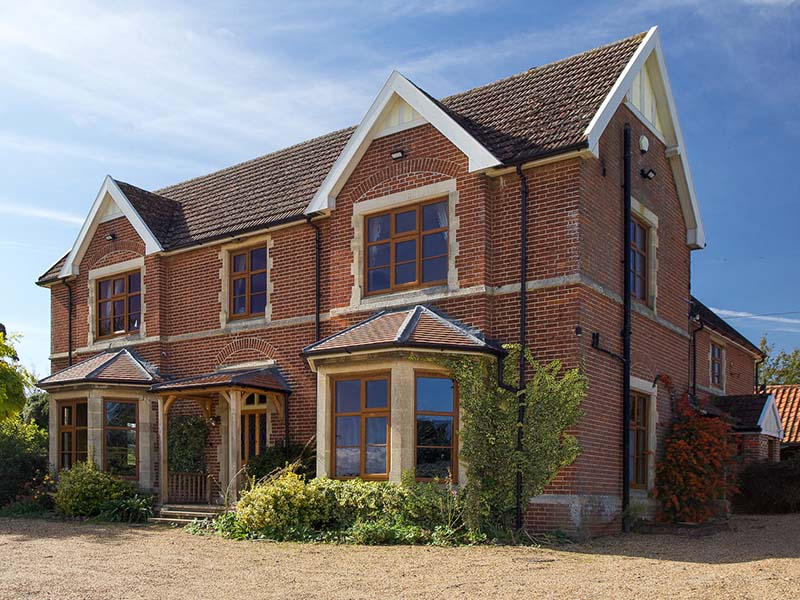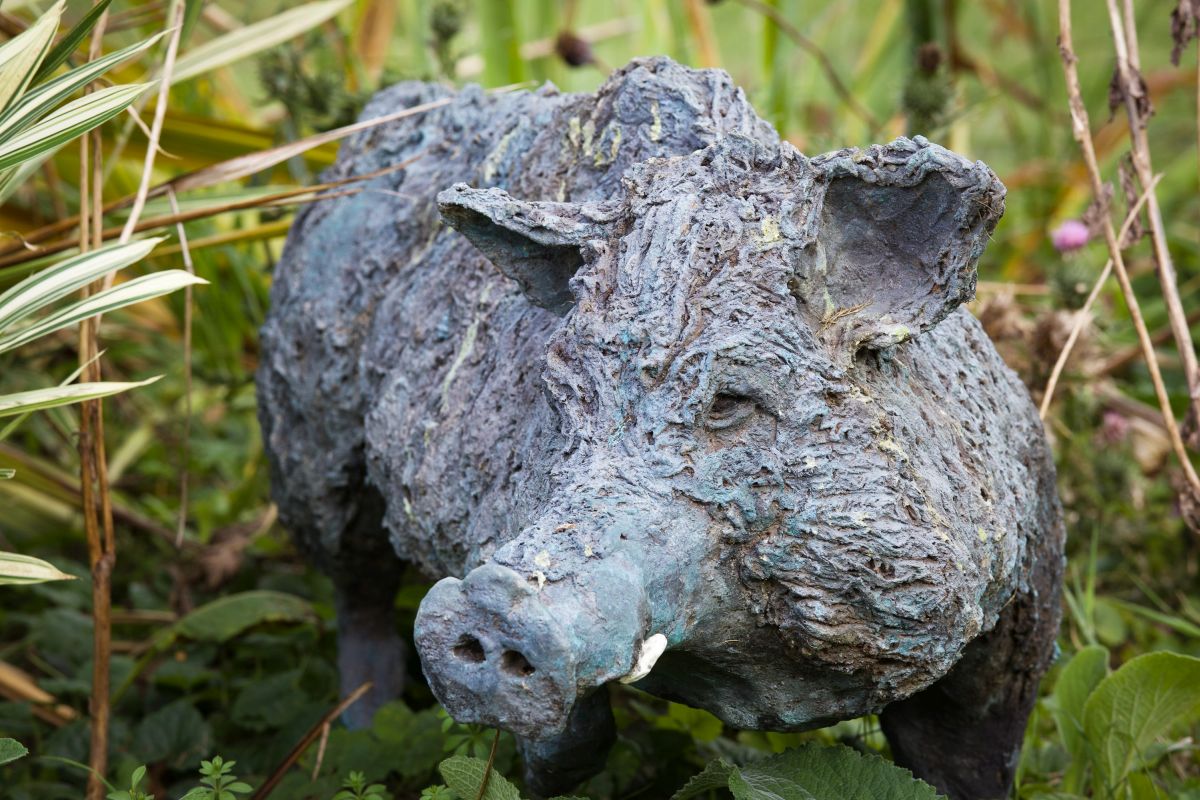A brief history
The Duke’s Lodge we see today was built by the Duke of Norfolk in 1870. A decade earlier, an inventory of the whole of Earsham Park Farm from 1860 kept in the Duke of Norfolk’s records, describes the amount of wheat, timber and cattle etc. provided by the farm and refers to the original property as “House in poor state of repair, fit only for a tenant…”
Clearly soon after the inventory was completed, it was concluded that the house wasn’t even good enough for a poor tenant after all! The house – believed to have been timber-framed, as the water colour now in the dining room of Duke’s Lodge suggests – was subsequently demolished, to be replaced by the present 8 bedroom house which was completed in 1870.

Some time shortly afterwards, the property left the ownership of the Duke of Norfolk. Rumour has it that it was gifted to a natural (illegitimate) son. According to the records, it came onto the market in the early 1900s when it was bought by the Meade family. It remains in their ownership to this day.
Early beginnings & royal connections
The site here is believed to be an ancient one. Finds on the land have been dated to Paleolithic times, and also to the Anglo-Saxon period.
It also has fascinating royal connections through its early manorial lords.
Roger, 1st Earl Bigod came over with William the Conqueror in 1066 and his son Hugh, inherited many estates in East Anglia. For many years Roger and his sons and heirs – all rather confusingly called either Hugh or Roger! – had an on-off relationship with the Crown. Bigod was a big-cheese of his day, present at the signing of the Magna Carta and one of the dozen or so powerful barons who forced King John to sign the document, now often referred to as England’s ‘Cradle of the Law’.
Close to the lands of today’s Earsham Park Fam, Bungay Castle was Bigod-built in around 1100. The Earl however found himself on the wrong side during the 1173/74 revolt and the castle at Bungay was mostly destroyed by Henry II. The ownership of Bungay Castle swayed between the Bigods and the Crown until 1483, when it was acquired by the powerful Dukes of Norfolk – the Howard family. It remained as part of the Howard dominion until its sale in the early 20th century.
From written records, we know that the Earls had a deer park not far from the castle. We have a map dated to approximately 1650 by the local history department of the University of East Anglia. This shows the lands of Earsham Park Farm on which The Duke’s Lodge stands today as a deer park of about 540 acres. The whole park was surrounded by a tall wooden fence. The field nearest Bungay is called “The Earl’s Prospect” – perhaps as it could be seen from the keep of Bungay Castle?
Not only does the 1650 map show a house similar to the one demolished in 1860 (as per the watercolour hanging in the dining room), it also shows the farm as growing turnips or other root crops and feeding them to the animals.
At that time root crops were the basis of the Agricultural Revolution in England. They allowed farmers to keep more livestock and hence produce more manure to fertilise the land, resulting in heavier crops. Turnip Townshend, a viscount from North Norfolk, was allegedly the first person to farm in this way in the early 1700s, however this evidence shows that the practice was going on in South Norfolk about 50 years before!
On track & maintaining the farming tradition
The farm continued under the ownership of the Howards, Dukes of Norfolk, for hundreds of years.
It saw the railway line open below the house (where the A143 is today) in 1855, and before World War I, was believed to be the biggest single producer-supplier of horses for Hackney carriages down in London. The animals were loaded onto the trains at the bottom of the Lodge’s drive.
During World War II, the railway line was used to bring in ordnance to supply the big American bomber bases which were built at amazing speed and situated all around the area. The troops hid the bombs in scrapes in the surrounding woodlands.
After the war there have been several tenants, culminating in Simon and Bobbie Watchorn who arrived at Earsham Park Farm in 1989. They farmed arable crops and outdoor pigs and in 2014, Simon was awarded the title and accolade of “British Pig Farmer of the Year”.
Initially their Victorian home welcomed guests as a farmhouse B&B. It was then converted to 2 self-catering units and a private dwelling, before being completely gutted and refurbished in 2022-2023 to make the house you see today.
Earsham Park Farm’s old Victorian farm buildings have been converted into workshop units and nurtured a community of skilled tenants who keep different traditions alive, including upholsterers, picture framers, sign makers and artists.










